Cultural Heritage

Tourism Sites
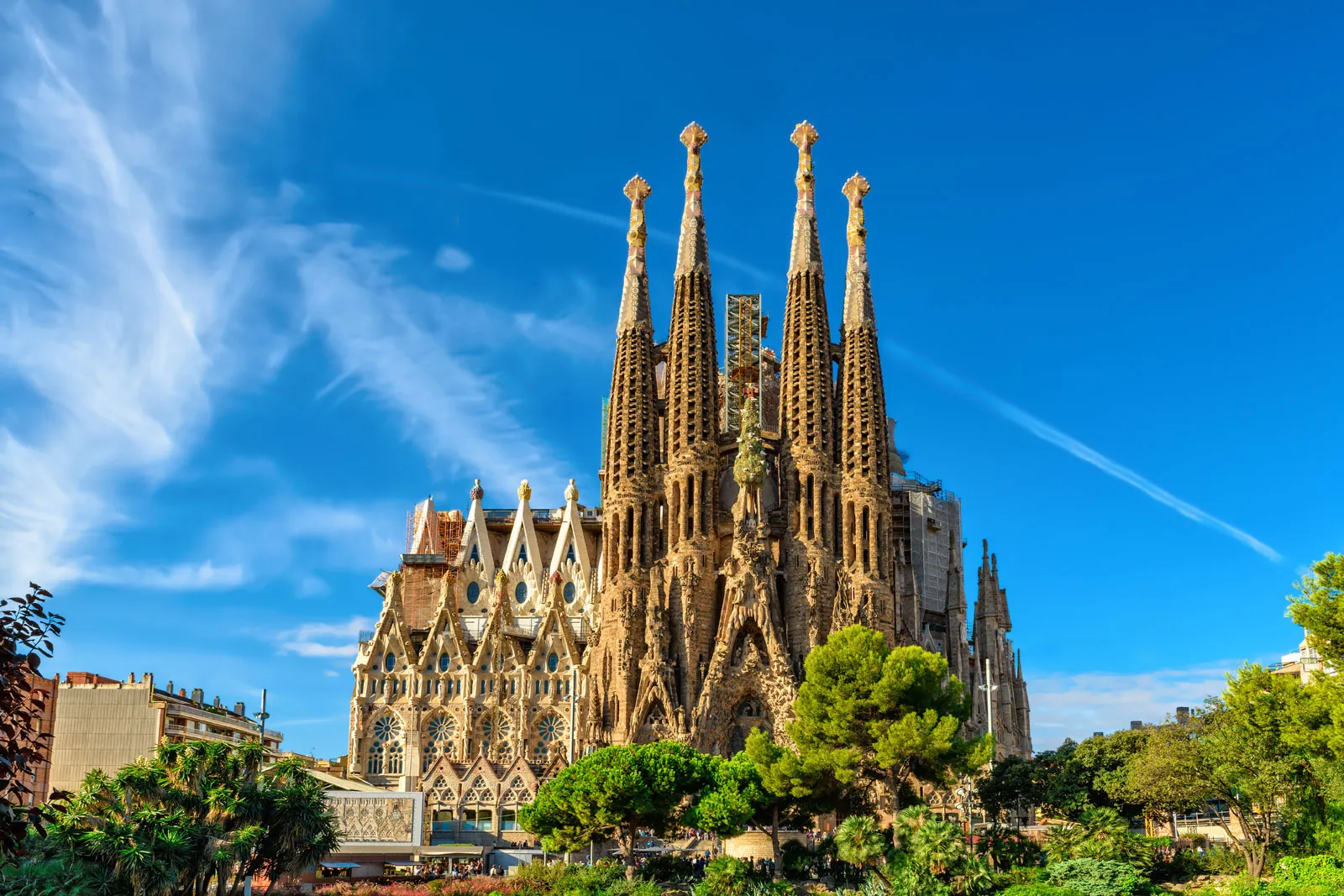
Basilica of the Sagrada Familia
🧠 Fact: Designed by Antoni Gaudí, this iconic basilica has been under construction since 1882 and is expected to be completed in 2026.
💡 Tip: Purchase tickets online in advance to avoid long queues.
Info: The Basilica of the Sagrada Familia, located in Barcelona, Spain, is a world-famous architectural masterpiece designed by Antoni Gaudí. Construction began in 1882 and continues to this day, making it one of the longest-running architectural projects in history. The basilica showcases a unique blend of Gothic and Art Nouveau styles, with intricate facades and stunning interior columns resembling a forest. A UNESCO World Heritage Site, it attracts millions of visitors annually. Gaudí's visionary design and spiritual symbolism make the Sagrada Familia a must-see landmark and a symbol of Barcelona’s cultural identity.
- 📍 Spain, Barcelona
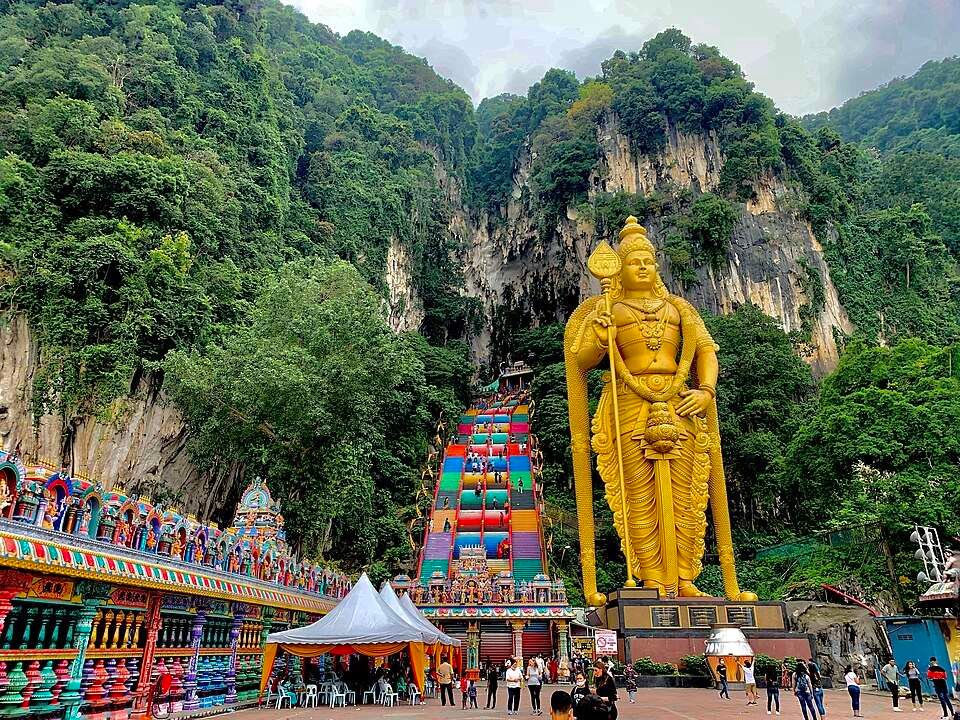
Batu Caves
🧠 Fact: A massive limestone hill with a series of caves and temples, including the famous 272-step climb to reach the top.
💡 Tip: Visit during Thaipusam for a vibrant cultural experience.
Info: Batu Caves, located just outside Kuala Lumpur, Malaysia, is a renowned Hindu pilgrimage site and popular tourist attraction. The site features a series of limestone caves and cave temples, with the iconic 42.7-meter golden statue of Lord Murugan standing at its entrance. Visitors climb 272 colorful steps to reach the main temple cave, which houses intricate shrines and religious artwork. Batu Caves is especially vibrant during the Thaipusam festival, attracting thousands of devotees. Surrounded by lush vegetation and inhabited by curious monkeys, it offers a unique blend of spirituality, culture, and natural beauty.
- 📍Malaysia, Gombak, Kuala Lumpur
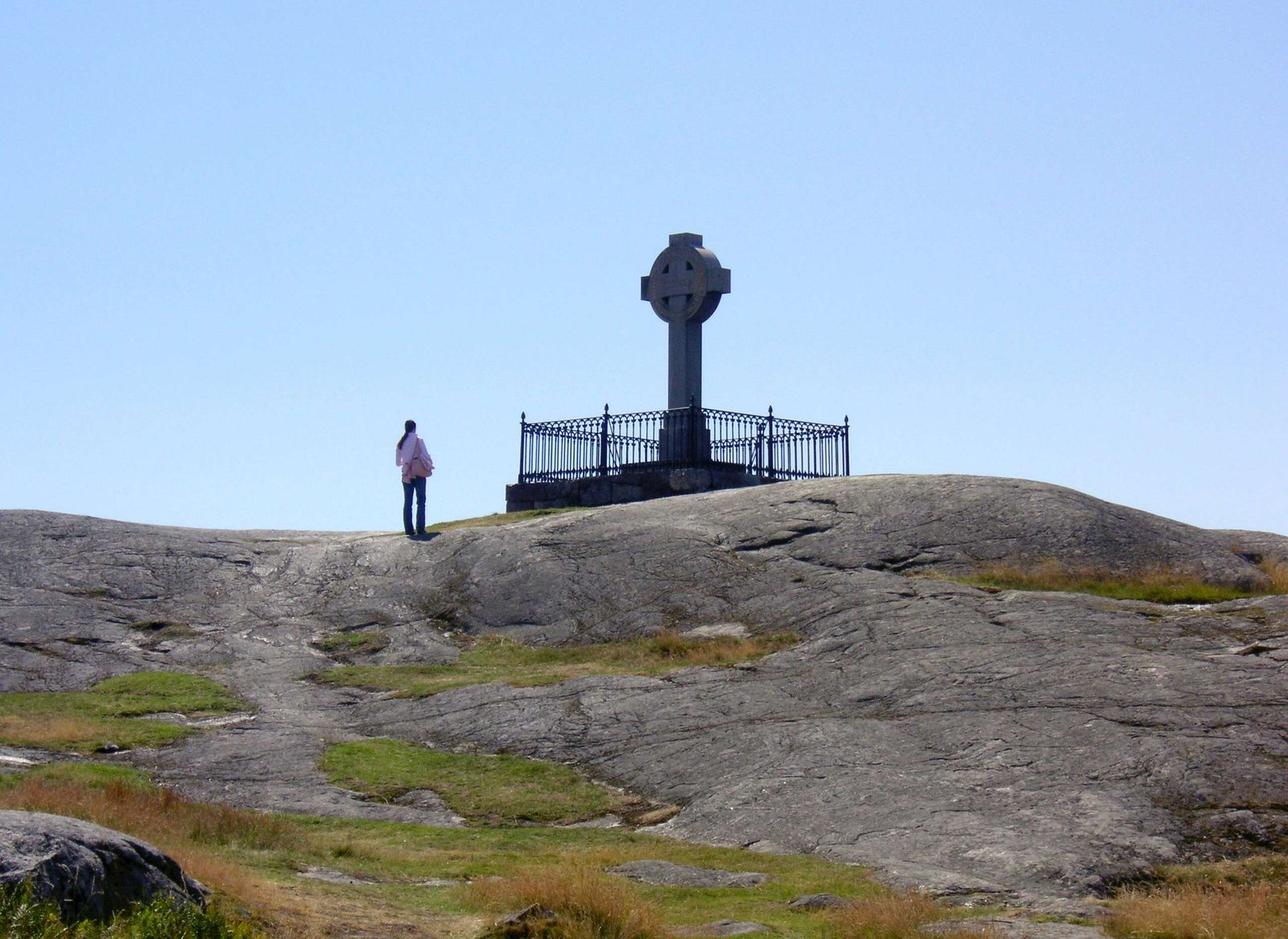
Birka
🧠 Fact: An archaeological site and former Viking trading center located on Björkö Island.
💡 Tip: Take a boat tour from Stockholm to explore the museum and ancient ruins.
Info: Birka, on the island of Björkö in Lake Mälaren, was founded around AD 750 and thrived as Sweden’s first major urban settlement until about AD 975. This Viking‑Age entrepôt linked Scandinavia with Western Europe, the Byzantine Empire, and the Arab world, trading furs, iron, textiles, and exotic goods like Arabic silver.
- 📍 Sweden, Björkö Island
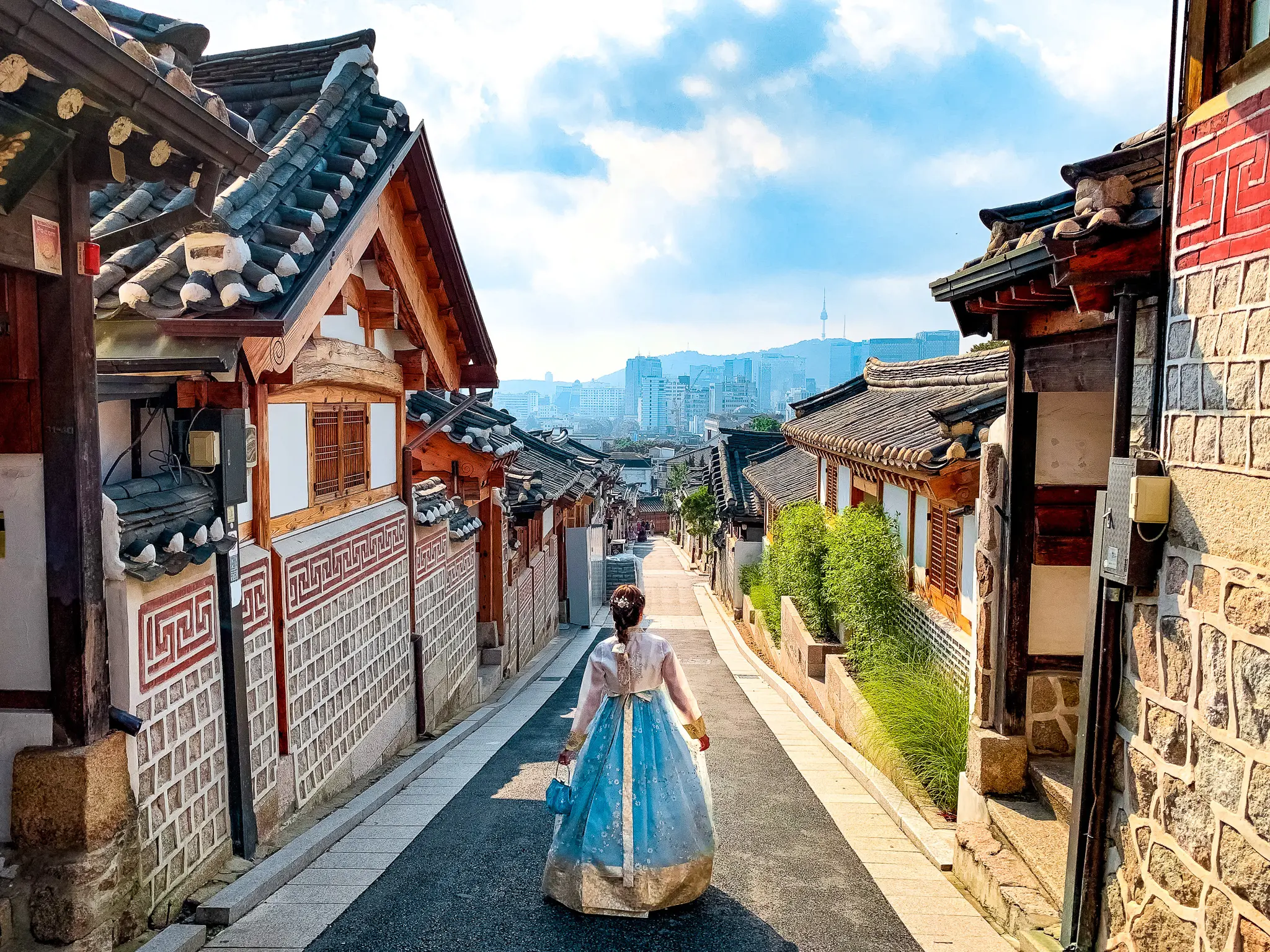
Bukchon Hanok Village
🧠 Fact: This traditional village showcases hundreds of hanok houses, offering a glimpse into Korea's past.
💡 Tip: Visit early in the morning to avoid crowds and respect residents' privacy.
Info: Bukchon Hanok Village, located in the heart of Seoul, South Korea, is a charming neighborhood that showcases traditional Korean architecture. Home to hundreds of well-preserved hanok (traditional Korean houses), the village offers a glimpse into the lifestyle of the Joseon-era aristocracy. Nestled between Gyeongbokgung and Changdeokgung Palaces, it blends cultural heritage with modern life, as many homes now serve as galleries, tea houses, and guesthouses. Visitors can wander through narrow alleys, admire the elegant wooden homes, and enjoy the serene atmosphere that contrasts with the bustling city surrounding it.
- 📍 South Korea, Seoul
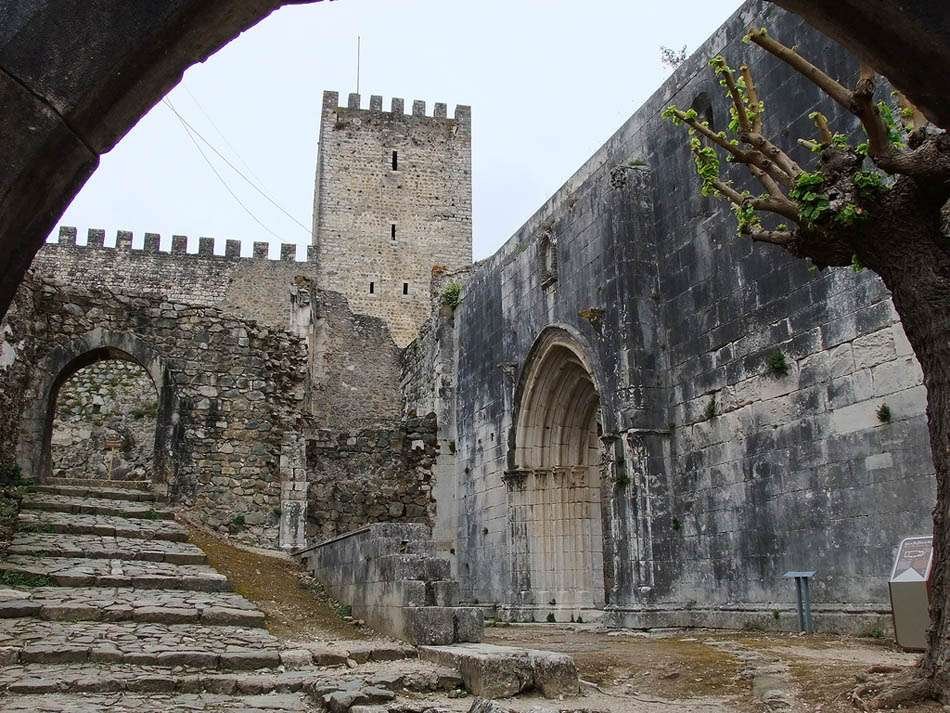
Castle of Leiria
🧠 Fact: An impressive medieval castle offering commanding views over the city of Leiria.
💡 Tip: Visit at sunset for dramatic views of the city and countryside.
Info: Leiria Castle, perched atop a hill in central Portugal, is a testament to the nation's medieval heritage. Originally constructed in the 12th century by King Afonso Henriques as a defense against Moorish forces, it was later enhanced by King Sancho I and King Dinis, who added the prominent keep in 1324. The castle complex includes the Church of Nossa Senhora da Pena and the Royal Palace, showcasing a blend of Romanesque and Gothic architecture. Restored in the 20th century, Leiria Castle now offers panoramic views of the city and serves as a cultural landmark, reflecting its historical significance and architectural evolution.
- 📍 Portugal. Leiria
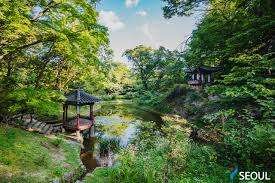
Changdeokgung Palace and Huwon (Secret Garden)
🧠 Fact: A UNESCO World Heritage site, renowned for its harmonious blend with nature.
💡 Tip: Join a guided tour to access the Secret Garden, as it's only available through scheduled tours.
Info: Changdeokgung Palace and Huwon, also known as the Secret Garden, is a UNESCO World Heritage Site located in Seoul, South Korea. Built in the early 15th century, the palace served as a royal residence during the Joseon Dynasty and is renowned for its harmonious integration with nature. Huwon, the palace’s hidden garden, features pavilions, lotus ponds, and centuries-old trees, offering a peaceful retreat within the city. The palace's elegant architecture and beautifully landscaped grounds reflect traditional Korean aesthetics, making it a must-visit for those interested in history, culture, and serene natural beauty.
- 📍 South Korea, Seoul
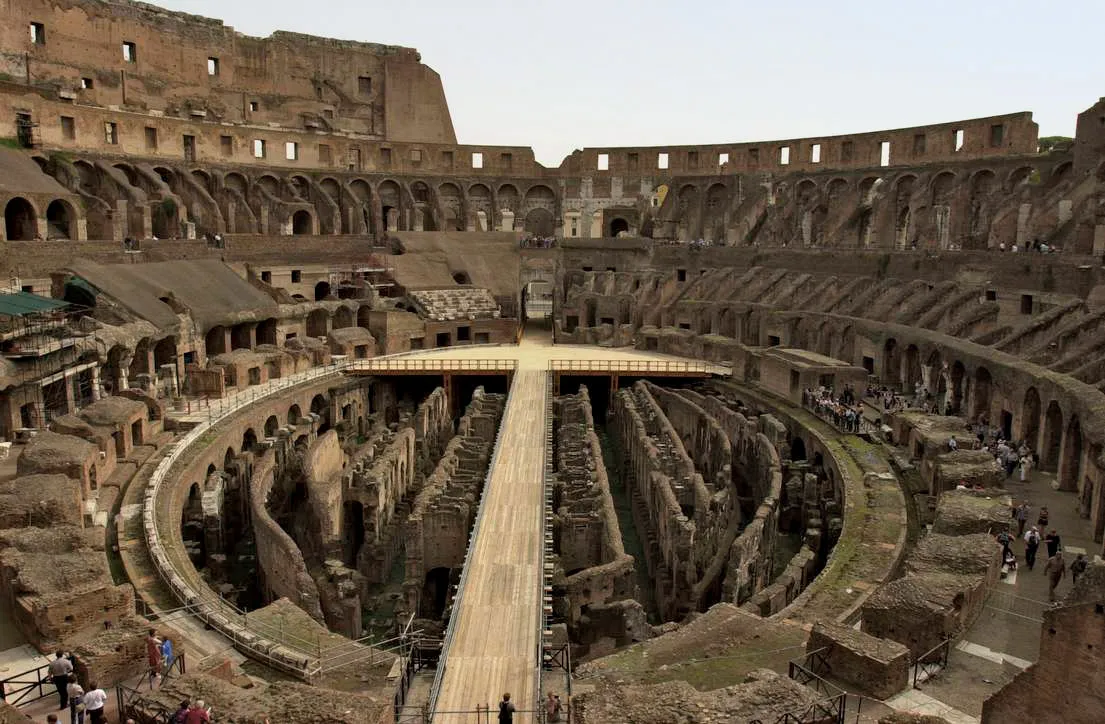
Colosseum
🧠 Fact: Ancient amphitheater once used for gladiator battles and public events.
💡 Tip: Book a skip-the-line tour to avoid long queues.
Info: The Colosseum in Italy, located in the heart of Rome, is one of the most iconic and well-preserved monuments of the ancient world. Completed in 80 AD, this massive amphitheater once held up to 50,000 spectators who gathered to watch gladiatorial games, animal hunts, and public spectacles. Built from stone and concrete, the Colosseum showcases the incredible engineering skills of the Roman Empire. Today, it stands as a powerful symbol of Rome’s imperial past and is a UNESCO World Heritage Site, attracting millions of visitors each year with its grandeur and historical significance.
- 📍 ITALY, ROME
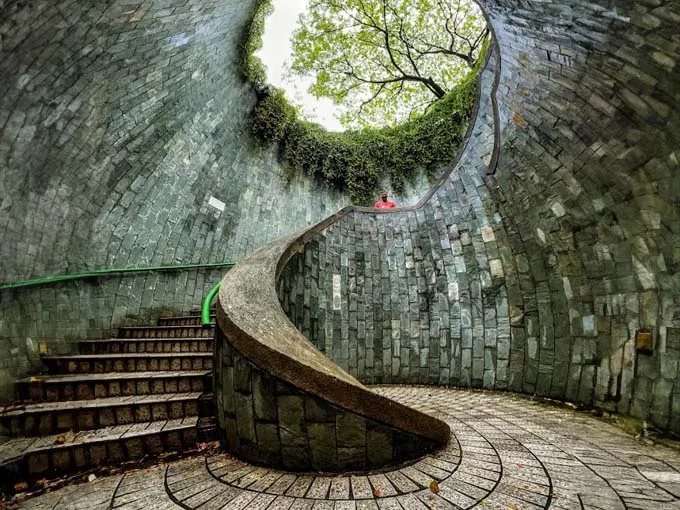
Fort Canning Park
🧠 Fact: A historic hilltop park where centuries of Singapore’s history unfolded — from ancient Malay rulers to WWII command bunkers.
💡 Tip: Join one of the heritage walking tours for hidden archaeological sites and secret tunnels.
Info: Fort Canning Park is a historic hilltop park in the heart of Singapore, rich in heritage and natural beauty. Once the site of a palace for Malay rulers and later a British military base, it now offers lush greenery, scenic walking trails, and fascinating landmarks like the Battlebox, an underground WWII command center. The park also hosts outdoor concerts, festivals, and art installations, blending culture with nature. Its central location and deep historical roots make Fort Canning Park a peaceful yet captivating escape in the city.
- 📍Singapore, Singapore
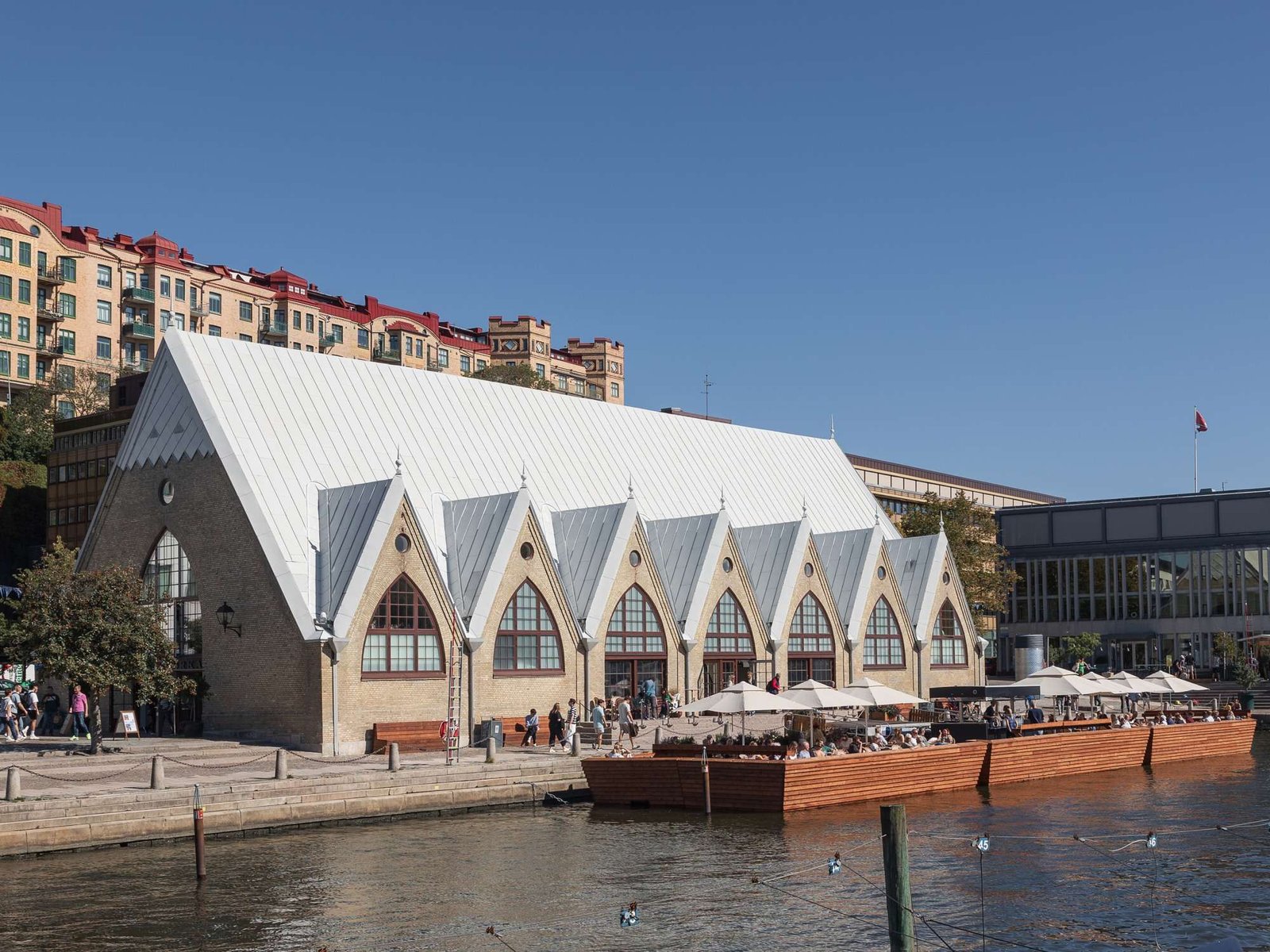
Gothenburg
🧠 Fact: Sweden's second-largest city is known for its Dutch-style canals, leafy boulevards, and vibrant cultural scene.
💡 Tip: Don't miss the Liseberg amusement park and the Universeum science center.
Info: Gothenburg, located on Sweden’s west coast, is the country’s second-largest city and a lively hub of culture, commerce, and coastal charm. Known for its maritime heritage, it features a busy harbor, scenic canals, and the famous Liseberg amusement park. Gothenburg offers a mix of modern attractions and historic sites, including the Gothenburg Museum of Art and the picturesque Haga district. The city is also celebrated for its seafood cuisine and vibrant festivals. With a relaxed atmosphere and friendly locals, Gothenburg provides a welcoming and authentic Swedish experience.
- 📍 Sweden, Gothenburg
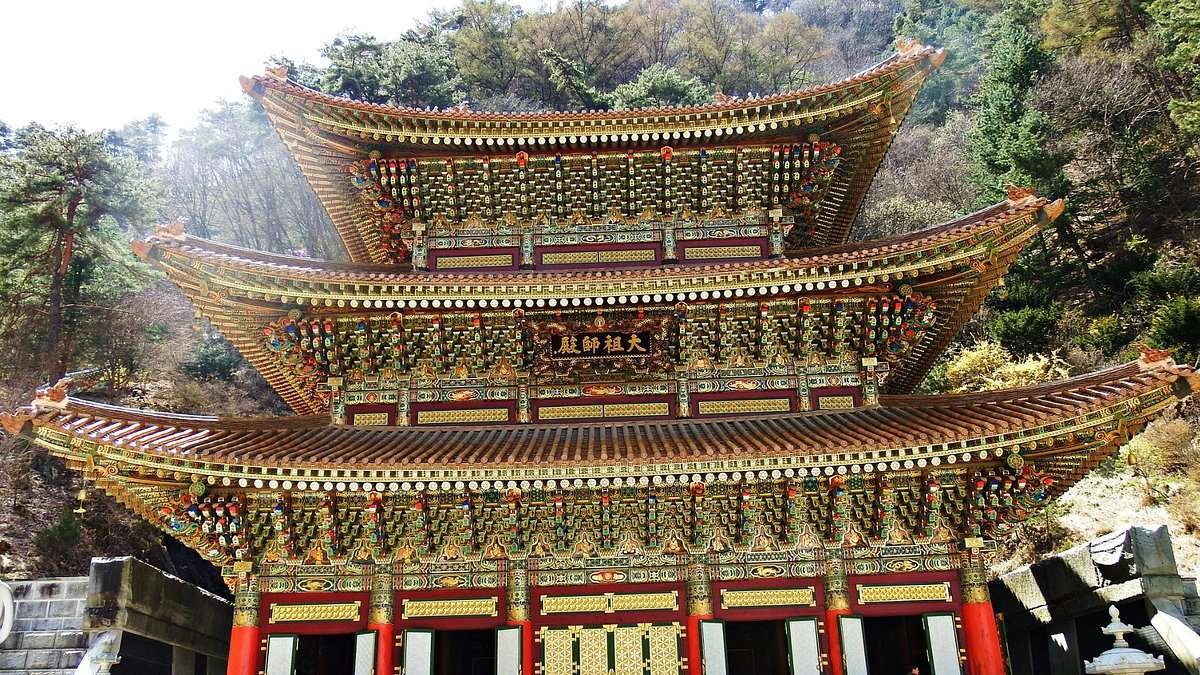
Guinsa Temple
🧠 Fact: The headquarters of the Cheontae Order of Korean Buddhism, nestled in the Sobaek Mountains.
💡 Tip: Participate in a temple stay program for an immersive cultural and spiritual experience.
Info: Guinsa Temple (구인사), nestled deep in a narrow valley of the Sobaek Mountains near Danyang, South Korea, is the vibrant headquarters of the Cheontae school of Korean Buddhism. Founded in 1945 by Monk Sangwol Wongak and rebuilt with dramatic multi‑story concrete halls by 1966, it now comprises over 50 buildings—including a soaring five‑storey Dharma Law Hall—with capacity for around 10,000 monks.
- 📍 South Korea, Danyang
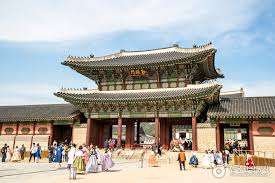
Gyeongbokgung Palace
🧠 Fact: Built in 1395, Gyeongbokgung is the largest of the Five Grand Palaces from the Joseon Dynasty.
💡 Tip: Renting a hanbok (traditional Korean attire) grants you free entry and enriches the cultural experience.
Info: Gyeongbokgung Palace, located in Seoul, South Korea, is the largest and most iconic of the Five Grand Palaces built during the Joseon Dynasty. Originally constructed in 1395, it served as the main royal residence and symbol of national sovereignty. The palace features stunning traditional architecture, expansive courtyards, and the picturesque Gyeonghoeru Pavilion. Visitors can witness the changing of the royal guard ceremony and explore the National Palace Museum and the National Folk Museum within its grounds. Gyeongbokgung offers a fascinating glimpse into Korea's royal history and cultural heritage.
- 📍 South Korea, Seoul
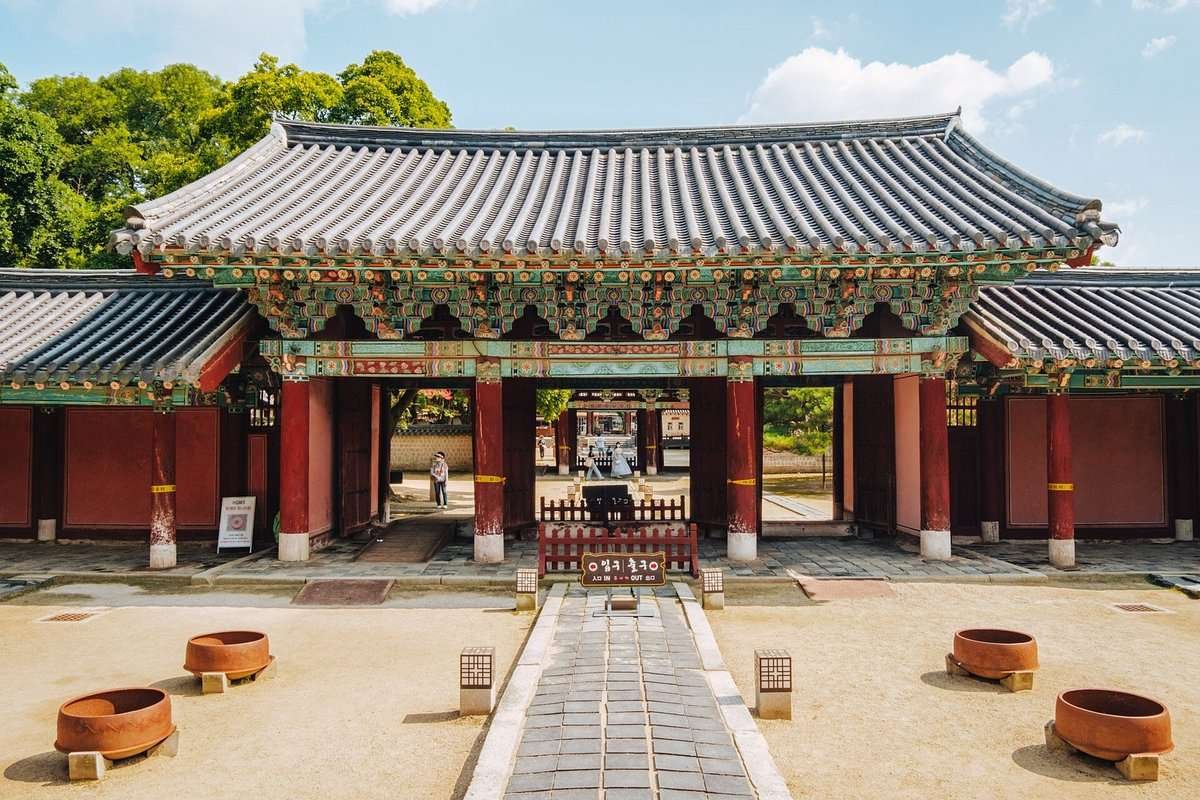
Gyeonggijeon Shrine
🧠 Fact: Built in 1410, it enshrines a portrait of King Tae-jo, founder of the Joseon Dynasty.
💡 Tip: Ideal for peaceful strolls — especially in spring when cherry blossoms bloom.
Info: Gyeonggijeon Shrine, located in Jeonju, South Korea, is a historic site built in 1410 to enshrine the portrait of King Taejo, the founder of the Joseon Dynasty. Surrounded by ancient pine trees and traditional architecture, the shrine offers a peaceful glimpse into Korea’s royal heritage. The complex also houses a museum displaying historical artifacts, royal portraits, and documents. Its well-preserved hanok buildings and serene atmosphere make it a popular destination for history enthusiasts and tourists exploring the nearby Jeonju Hanok Village.
- 📍 South Korea, Jeonju
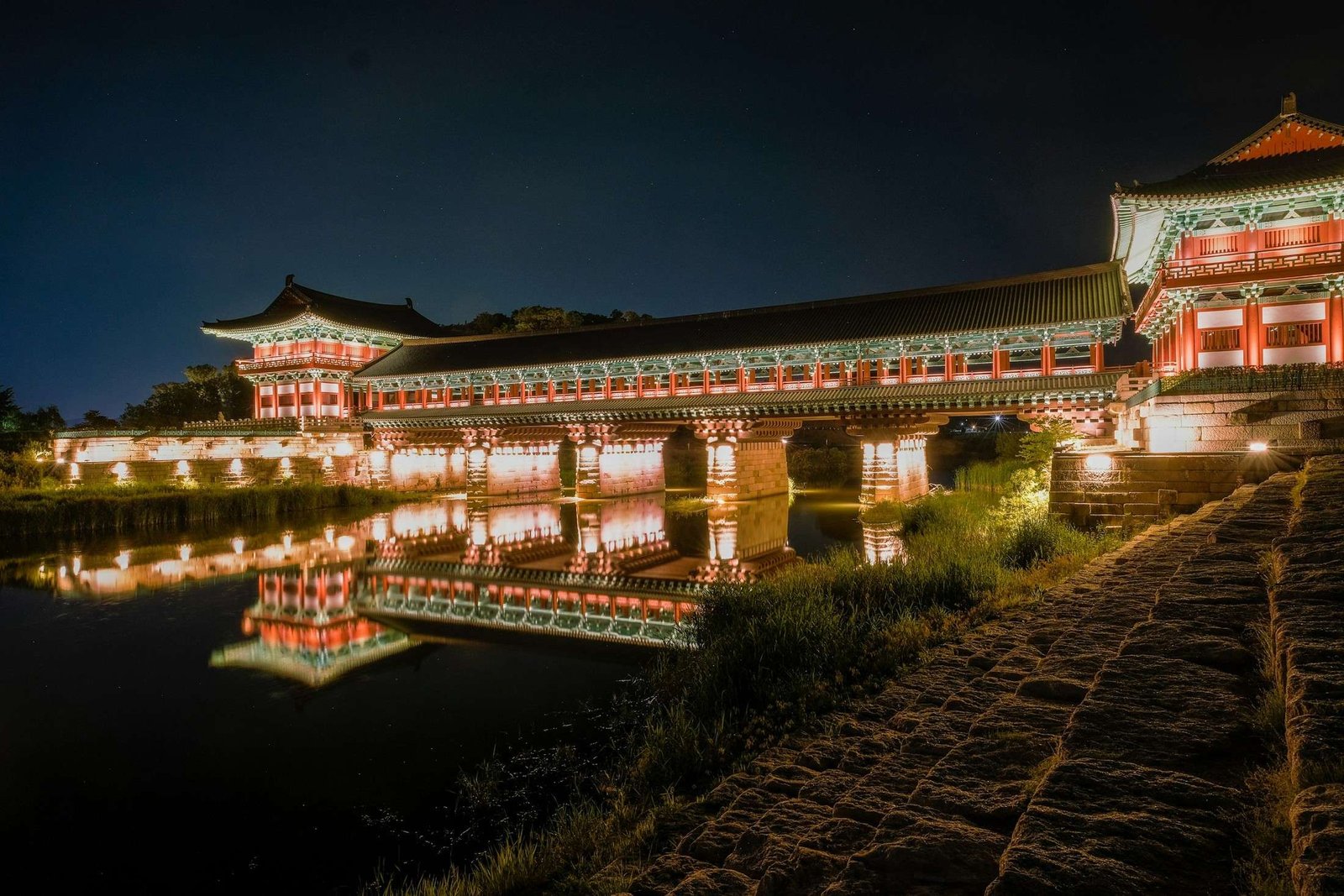
Gyeongju-si
🧠 Fact: The “Museum Without Walls” — packed with ancient tombs, temples, and relics from the Silla
Dynasty.
💡 Tip: Don’t miss Bulguksa Temple and Seokguram Grotto (both UNESCO sites).
Info: Gyeongju-si, often called “the museum without walls,” is a historic city in South Korea that was once the capital of the ancient Silla Kingdom. Located in the southeastern region, it is rich in cultural heritage and home to numerous UNESCO World Heritage Sites. Key attractions include Bulguksa Temple, Seokguram Grotto, and the ancient tombs at Tumuli Park. Gyeongju’s Anapji Pond and Cheomseongdae Observatory offer glimpses into Korea’s past. With its well-preserved relics, traditional architecture, and serene landscapes, Gyeongju is a must-visit for those interested in Korean history and culture.
- 📍 South Korea, Gyeongju
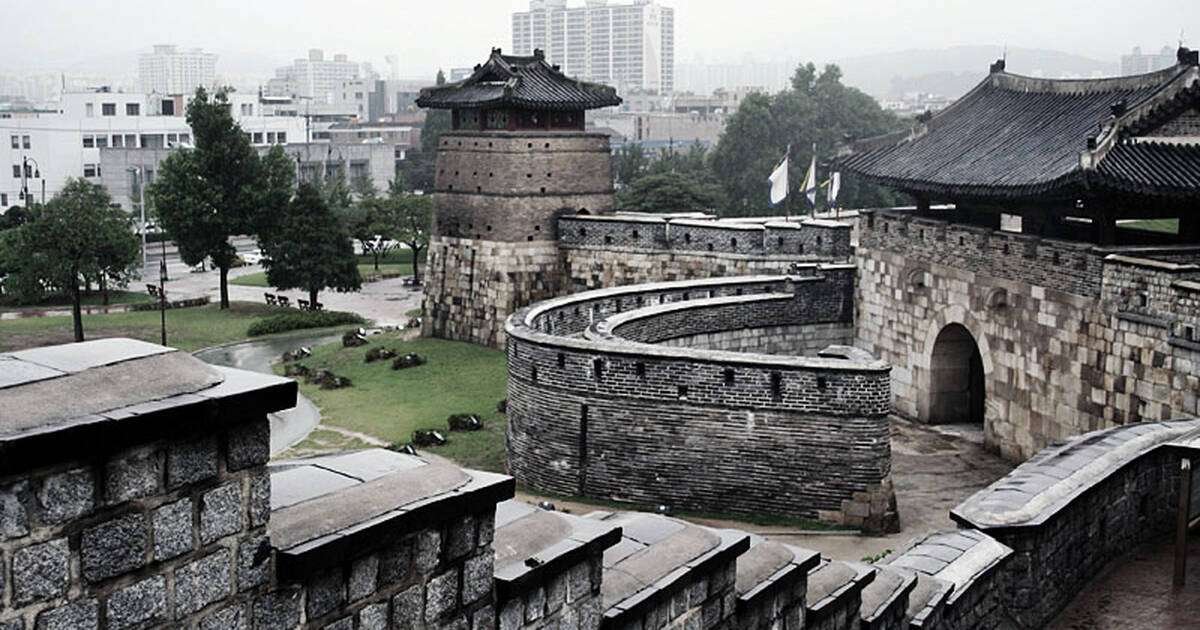
Hwaseong Fortress
🧠 Fact: A UNESCO World Heritage Site built in the late 18th century, encircling Suwon city.
💡 Tip: Walk the entire fortress wall loop for panoramic views over Suwon.
Info: Hwaseong Fortress, located in Suwon, South Korea, is a UNESCO World Heritage site built in the late 18th century during the Joseon Dynasty. Commissioned by King Jeongjo to honor his father and strengthen the kingdom, the fortress showcases impressive military architecture, combining Eastern and Western design techniques. The massive stone and brick walls stretch over 5.7 kilometers and include watchtowers, gates, and bastions. Surrounded by scenic landscapes, Hwaseong is not only a historical landmark but also a popular spot for walking, cultural events, and traditional archery experience.
- 📍 South Korea, Suwon
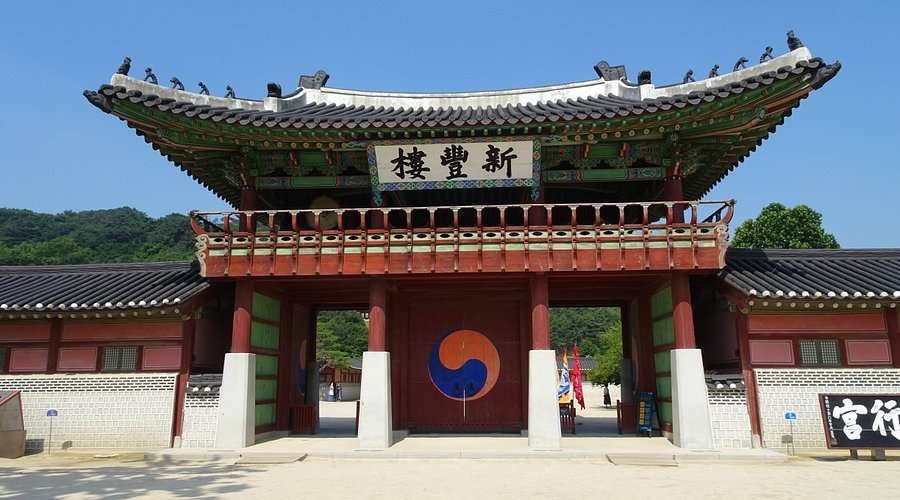
Hwaseong Haenggung Palace
🧠 Fact: Korea’s largest temporary palace, historically used by King Jeongjo during royal visits.
💡 Tip: Time your visit for a reenactment of royal parades on weekends.
Info: Hwaseong Haenggung Palace, nestled in Suwon, South Korea, is the royal temporary residence within the grand Hwaseong Fortress, built under King Jeongjo in 1794. Designed as a retreat for the king during official visits, the palace showcases beautifully restored hanok-style buildings—such as the Jeongjeongmun Gate and the Jongyemun Hall—set amidst pine trees and winding fortress walls. Its intimate scale and serene courtyards offer a glimpse into Joseon-era royal life away from the main palace in Seoul. Today, Hwaseong Haenggung hosts cultural performances, traditional ceremonies, and festivals, inviting visitors to step back into Korea’s regal past.
- 📍 South Korea, Jeonju
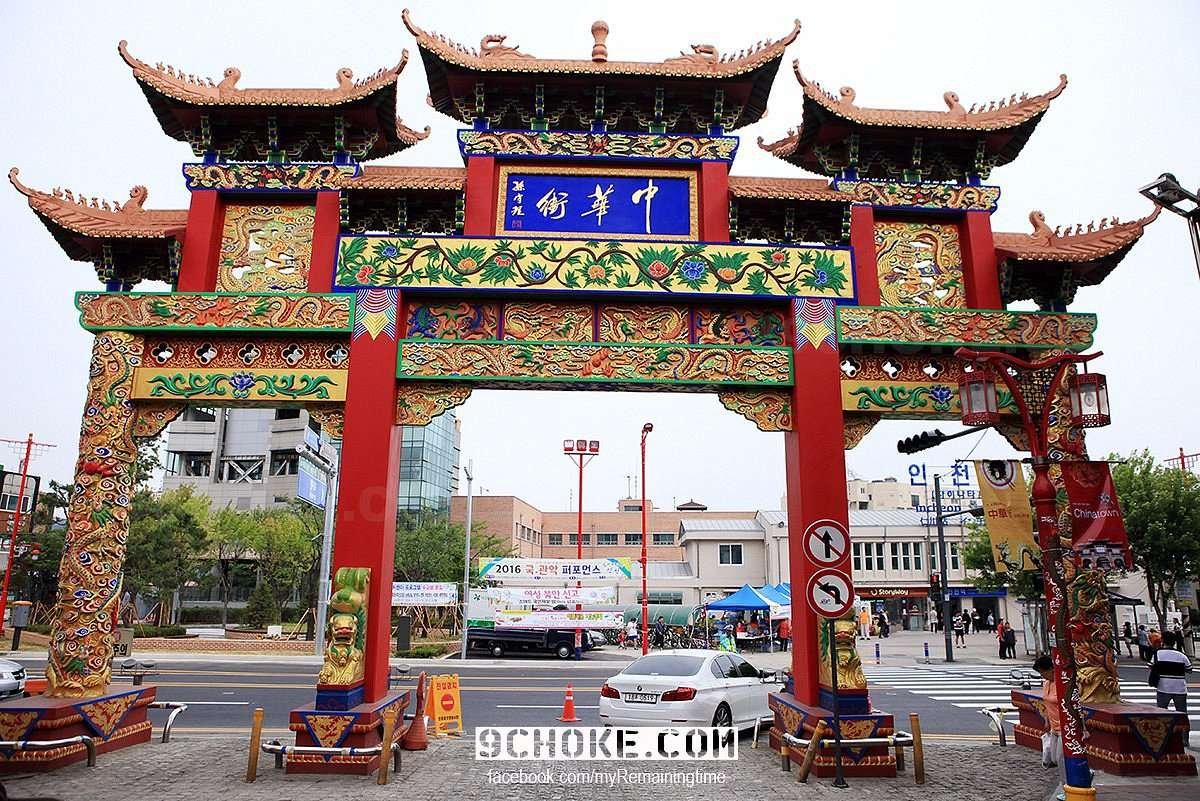
Incheon Chinatown
🧠 Fact: Korea’s largest and oldest Chinatown, known for fusion dishes like Jajangmyeon.
💡 Tip: Visit during Lunar New Year for lion dances and street festivals.
Info: Incheon Chinatown, located near Incheon Station in South Korea, is the country’s largest and only official Chinatown. Established in 1883, it blends Chinese and Korean cultures through vibrant streets filled with colorful lanterns, murals, and traditional architecture. Visitors can enjoy authentic Chinese cuisine, including the famous Jajangmyeon noodles, which originated here. The area also features attractions like Jayu Park and cultural centers showcasing Chinese history in Korea. Incheon Chinatown offers a unique, immersive cultural experience just an hour from Seoul, making it a popular destination for locals and tourists alike.
- 📍 South Korea, Incheon
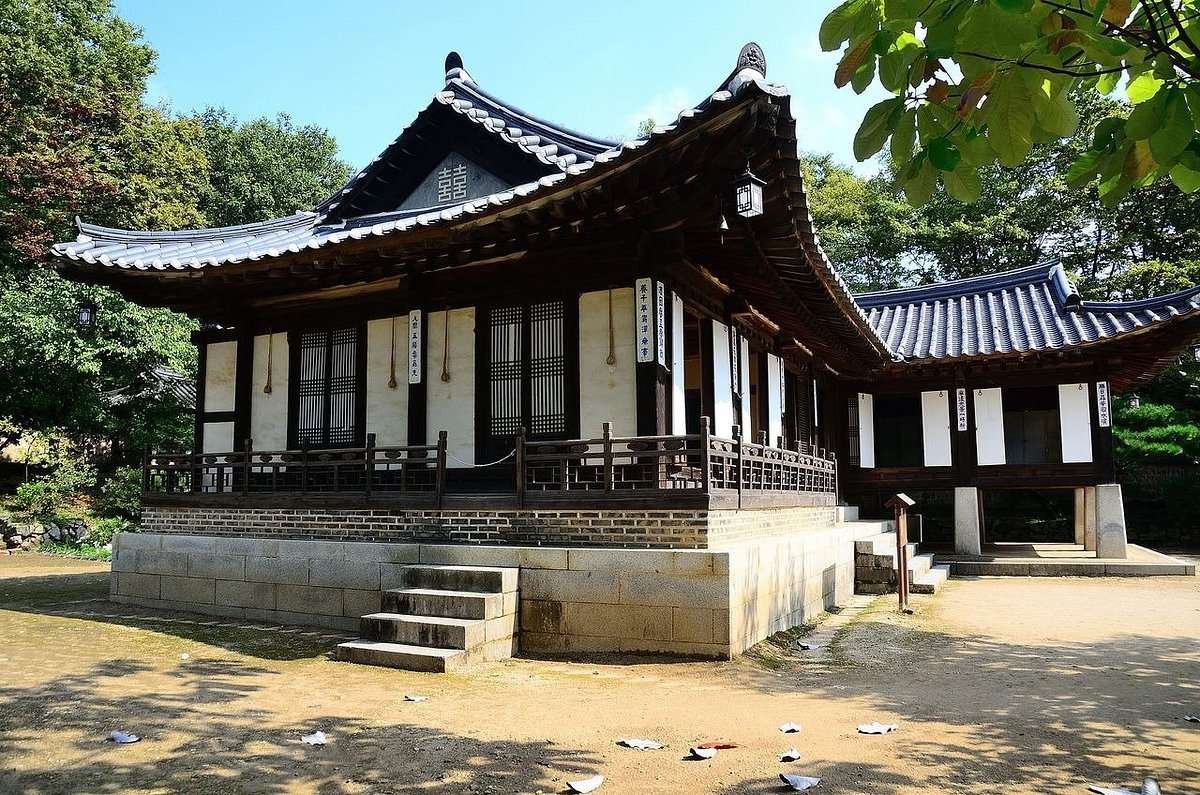
Korean Folk Village
🧠 Fact: An outdoor living history museum showcasing Joseon-era village life with real performances and artisans.
💡 Tip: Great for families; check the schedule for traditional wedding ceremonies and tightrope walking.
Info: Korean Folk Village, located near Yongin, Gyeonggi Province, offers a living museum experience that vividly brings Joseon-era Korea to life. Set across traditional hanok homes, workshops, and agricultural fields, the village recreates rural life with artisans demonstrating crafts like pottery, weaving, and blacksmithing. Visitors can enjoy cultural performances such as tightrope walking, folk dances, and equestrian shows, along with sampling traditional snacks and local meals. Seasonal festivals—from harvest celebrations to lantern events—enhance the immersive atmosphere. Nestled amid rolling hills and serene lakes, the Korean Folk Village provides a picturesque and educational journey into Korea’s rich folk heritage.
- 📍 South Korea, Suwon
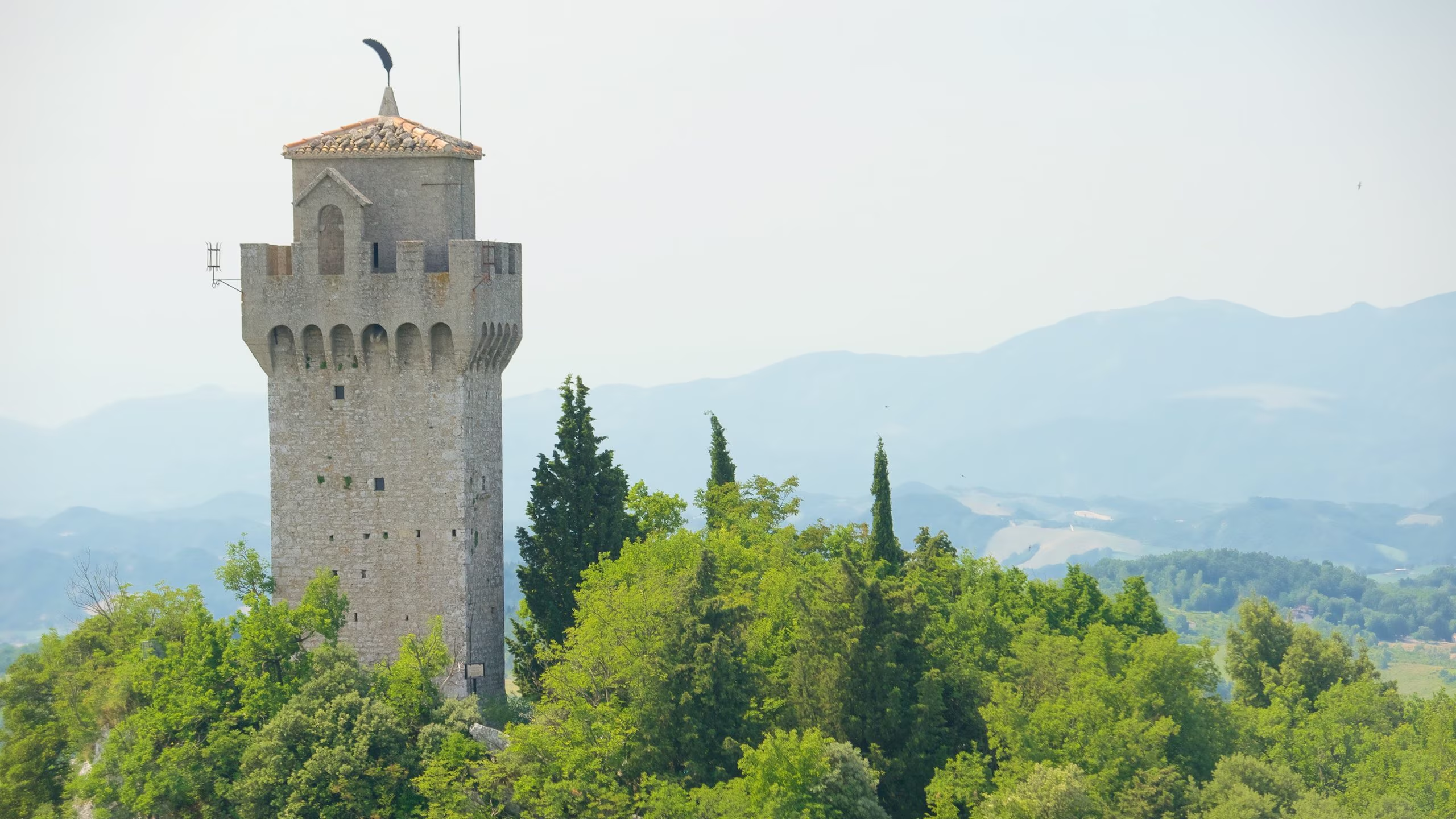
Montale
🧠 Fact: The third and smallest of the Three Towers, Montale was historically used as a lookout and prison.
💡 Tip: While the tower isn’t open to the public, the viewpoint nearby is worth the walk.
Info: Montale Tower, also known as the Third Tower, is the smallest and most secluded of San Marino’s iconic fortifications atop Monte Titano. Constructed in the 14th century, it served as a watchtower and prison, notably featuring a single entrance located seven meters above ground—a design typical for medieval prisons to prevent escape . Unlike the more accessible Guaita and Cesta towers, Montale remains closed to the public, preserving its historical authenticity. Visitors can still admire its unique pentagonal structure and enjoy panoramic views of the surrounding countryside from its base, making it a significant yet mysterious symbol of San Marino's heritage .
- 📍San Marino, San Marino
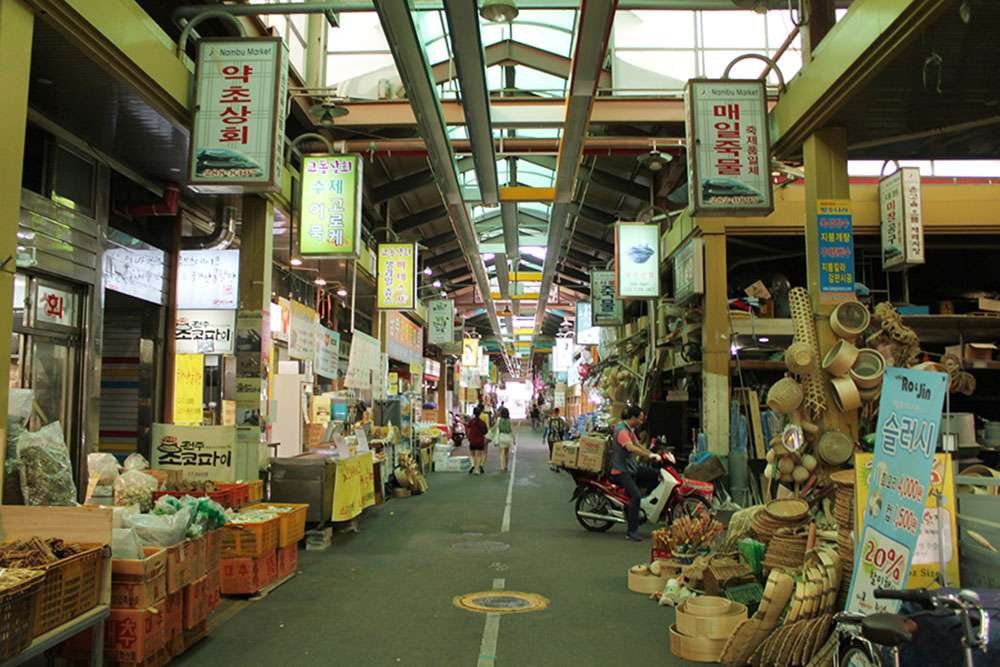
Nambu Traditional Market
🧠 Fact: A lively market famous for night food stalls and vintage flea markets.
💡 Tip: Don’t miss the Makgeolli Alley for authentic Korean rice wine taverns.
Info: Nambu Traditional Market, located in Jeonju, South Korea, is a bustling and vibrant marketplace known for its rich history and local charm. Established during the Joseon Dynasty, the market offers a wide range of goods, including fresh produce, street food, clothing, and handmade crafts. It's especially famous for its lively night market, where visitors can enjoy traditional Korean snacks and cultural performances. With its friendly atmosphere and authentic local experience, Nambu Market is a must-visit destination for anyone wanting to explore Korea’s traditional market culture.
- 📍 South Korea, Jeonju
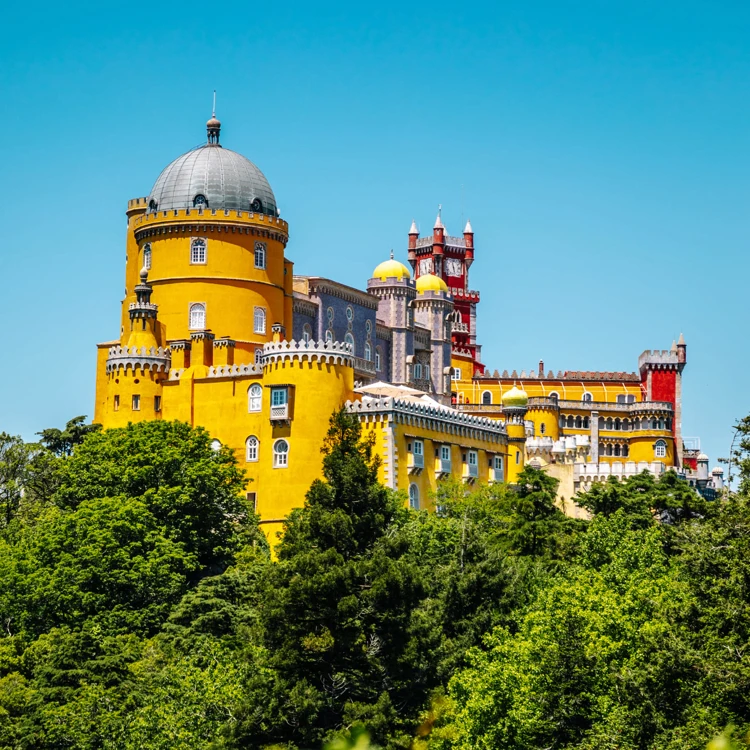
Pena Palace
🧠 Fact: A 19th-century Romanticist castle perched on a hilltop, often enveloped in mist.
💡 Tip: Visit early in the morning to avoid heavy crowds and get clearer photos.
Info: Pena Palace is a vibrant and eclectic 19th-century castle perched atop a hill in Sintra, Portugal. A UNESCO World Heritage Site, it is a masterpiece of Romantic architecture, blending Gothic, Manueline, Moorish, and Renaissance styles. Painted in vivid reds and yellows, the palace is surrounded by lush forests and offers stunning views of the surrounding landscape. Built by King Ferdinand II, it served as a summer residence for the Portuguese royal family. Today, Pena Palace is one of Portugal’s most iconic landmarks, attracting visitors from around the world with its fairy-tale charm and historical significance.
- 📍 Portugal, Sintra
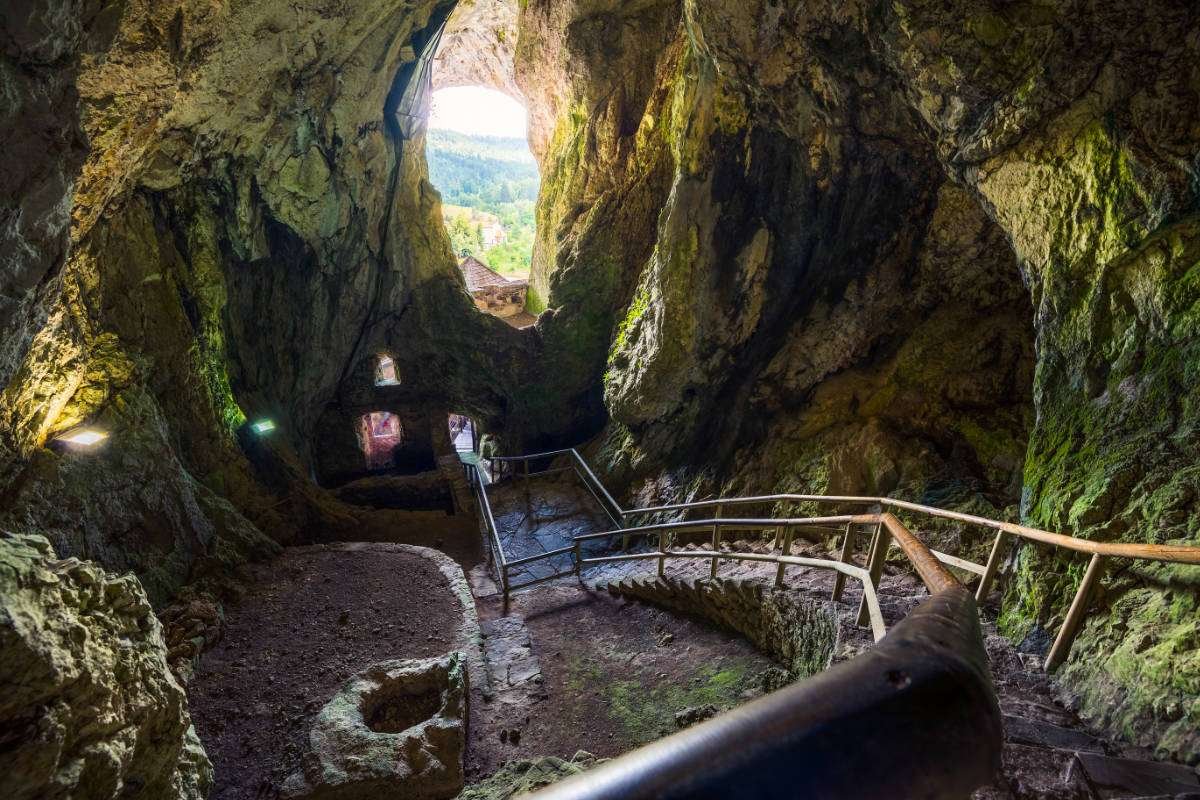
Predjama Castle
🧠 Fact: Built dramatically into a 123m cliff face, Predjama is the world’s largest cave castle.
💡 Tip: Combine your visit with a tour of nearby Postojna Cave, one of Europe’s biggest show caves.
Info: Predjama Castle in Slovenia is a dramatic and unique fortress built into the mouth of a cave halfway up a 123-meter cliff. Located near the town of Postojna, it dates back over 800 years and is renowned as the world’s largest cave castle. This Renaissance marvel combines natural rock with man-made architecture, creating a striking and defensible stronghold. The castle is famously linked to the knight Erazem of Predjama, a Slovenian Robin Hood figure. Visitors can explore its medieval rooms, secret tunnels, and learn about its rich history, often combined with a visit to the nearby Postojna Cave.
- 📍 Slovenia, Postojna
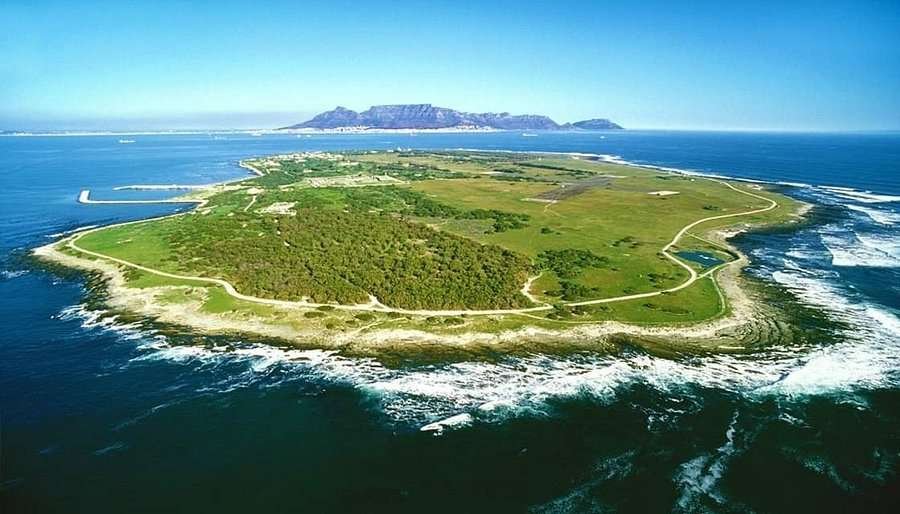
Robben Island Tour
🧠 Fact: This historic island prison housed Nelson Mandela for 18 of his 27 years in captivity.
💡 Tip: Book tickets online in advance — tours often sell out.
Info: The Robben Island Tour in South Africa offers a powerful and moving journey through the country’s history. Located off the coast of Cape Town, the island was home to a maximum-security prison where Nelson Mandela and other political prisoners were held during apartheid. Tours begin with a ferry ride from the V&A Waterfront and include a guided visit by a former inmate, providing firsthand insight into the harsh conditions and struggle for freedom. Visitors see Mandela’s former cell and learn about the island’s broader historical significance. The experience is both educational and deeply emotional, highlighting South Africa’s path to democracy.
- 📍 South Africa, Cape Town
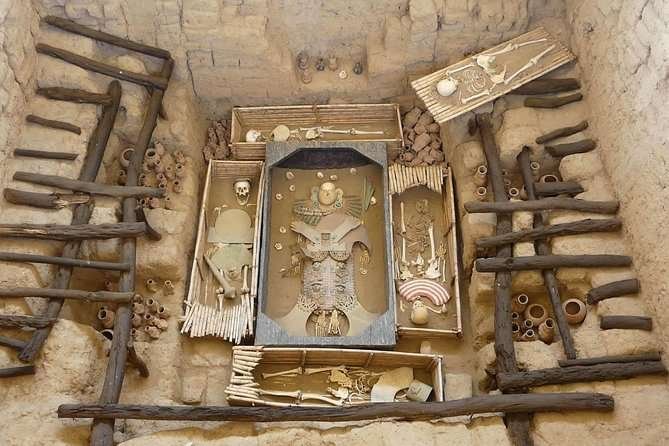
Señor de Sipán, Chiclayo
🧠 Fact: Tomb of an ancient Moche Lord, often compared to Egypt’s King Tut discovery.
💡 Tip: Visit the Túcume Pyramids nearby for a full-day archaeological adventure.
Info: The Señor de Sipán was a prominent Moche ruler from the 3rd century AD, whose intact tomb was discovered in 1987 at Huaca Rajada near Chiclayo, Peru . This archaeological find is considered one of the most significant in the Americas, revealing a wealth of artifacts including gold, silver, and precious stones . The tomb also contained the remains of several individuals and animals, suggesting complex burial rituals. Today, these treasures are housed in the Royal Tombs of Sipán Museum in Lambayeque, offering insights into the Moche civilization's sophistication and artistry .
- 📍Peru, Chiclayo
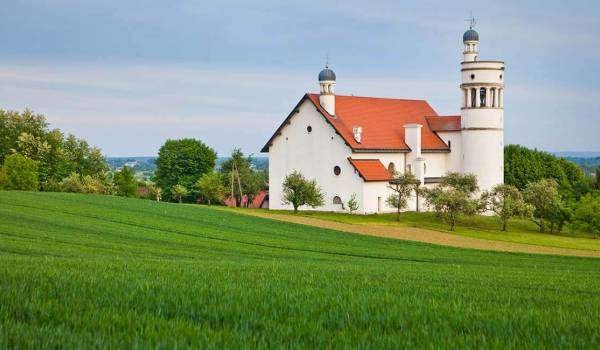
Slovenia’s Churches
🧠 Fact: Slovenia is dotted with centuries-old churches in breathtaking locations, from lakeside islands to hilltops.
💡 Tip: Don’t miss the Church of St. Primož in Jamnik for one of the country’s most photographed views.
Info: Slovenia is home to numerous historic and picturesque churches that reflect its deep-rooted Christian heritage and architectural diversity. Scattered across mountains, valleys, and villages, these churches often feature Gothic, Baroque, and Romanesque styles.
Among the most iconic is the Church of the Assumption on Lake Bled’s island, known for its fairytale setting. St. George’s Parish Church in Piran offers coastal charm with stunning Adriatic views, while St. Nicholas Cathedral in Ljubljana showcases Baroque grandeur and beautiful frescoes. High in the Julian Alps, St. Primus and Felician Church in Jamnik is celebrated for its serene location and panoramic vistas. These churches not only serve as places of worship but also as cultural and historical landmarks of Slovenia.
- 📍 Slovenia, Various
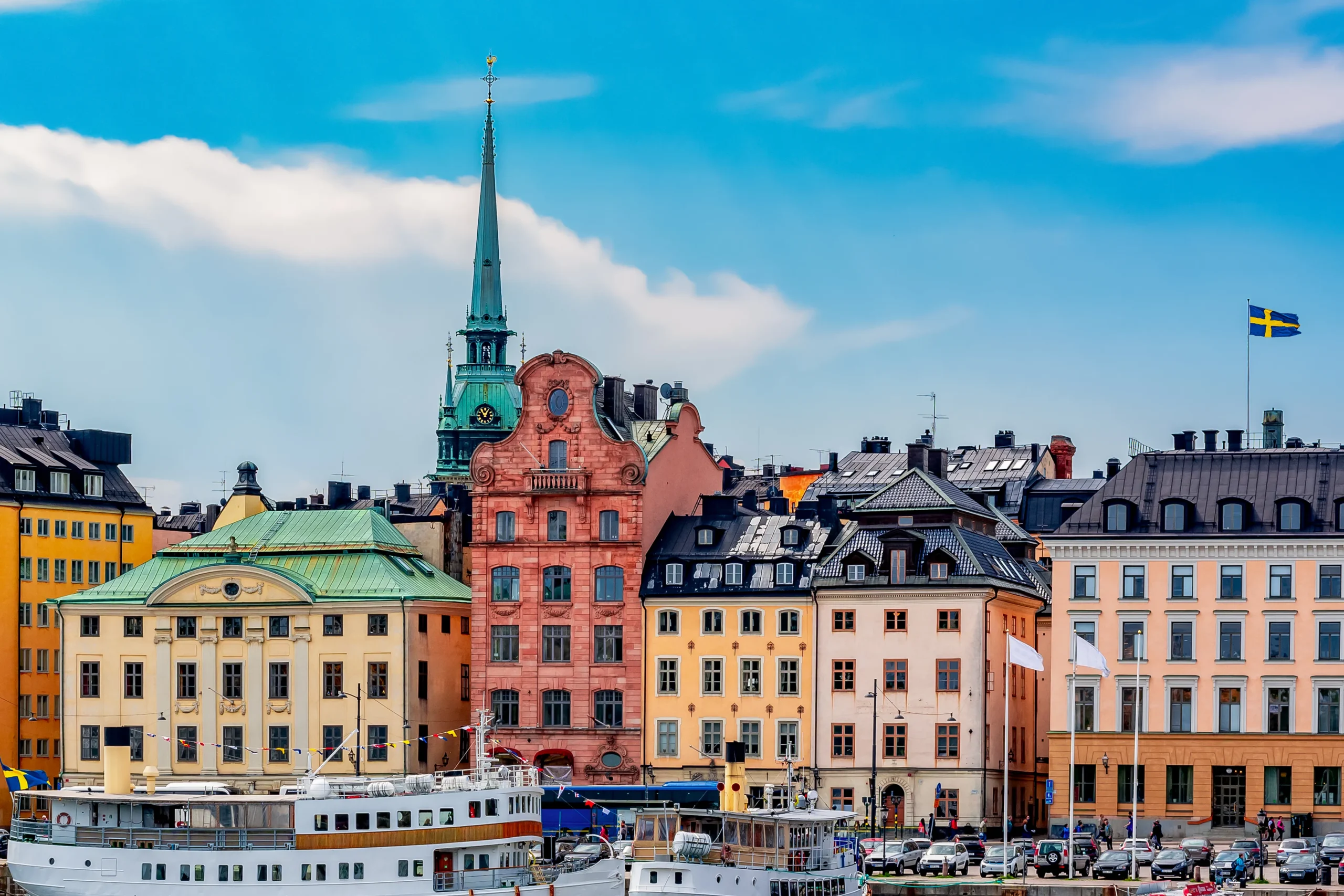
Stockholm
🧠 Fact: The capital city is built on 14 islands connected by over 50 bridges, offering a blend of historic charm and modern innovation.
💡 Tip: Explore Gamla Stan (Old Town) for cobblestone streets and colorful buildings, and visit the Vasa Museum to see a 17th-century warship.
Info: Stockholm, the capital of Sweden, is a vibrant city spread across 14 islands connected by over 50 bridges. Known for its stunning waterfronts, historic architecture, and modern design, Stockholm offers a unique blend of old and new. Visitors can explore the medieval Old Town (Gamla Stan), the Royal Palace, and world-class museums like the Vasa Museum. The city is also a leader in sustainability and innovation. With its scenic beauty, rich culture, and high quality of life, Stockholm stands out as one of Europe’s most attractive and livable cities.
- 📍 Sweden, Stockholm
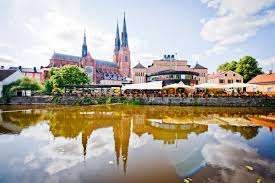
Uppsala
🧠 Fact: Home to Scandinavia's oldest university, Uppsala boasts a rich history and vibrant academic culture.
💡 Tip: Visit the Uppsala Cathedral and the Gustavianum museum for insights into Swedish
history.
Info: Uppsala, one of Sweden’s oldest and most historic cities, is located just north of Stockholm. Known for its prestigious Uppsala University, founded in 1477, the city is a vibrant center of education and culture. Uppsala features iconic landmarks such as the Uppsala Cathedral—the largest church in Scandinavia—and the Gustavianum museum. The city blends a rich Viking heritage with a youthful atmosphere, thanks to its large student population. With its beautiful riverfront, botanical gardens, and scholarly charm, Uppsala offers a unique glimpse into Sweden’s past and present.
- 📍 Sweden, Uppsala
